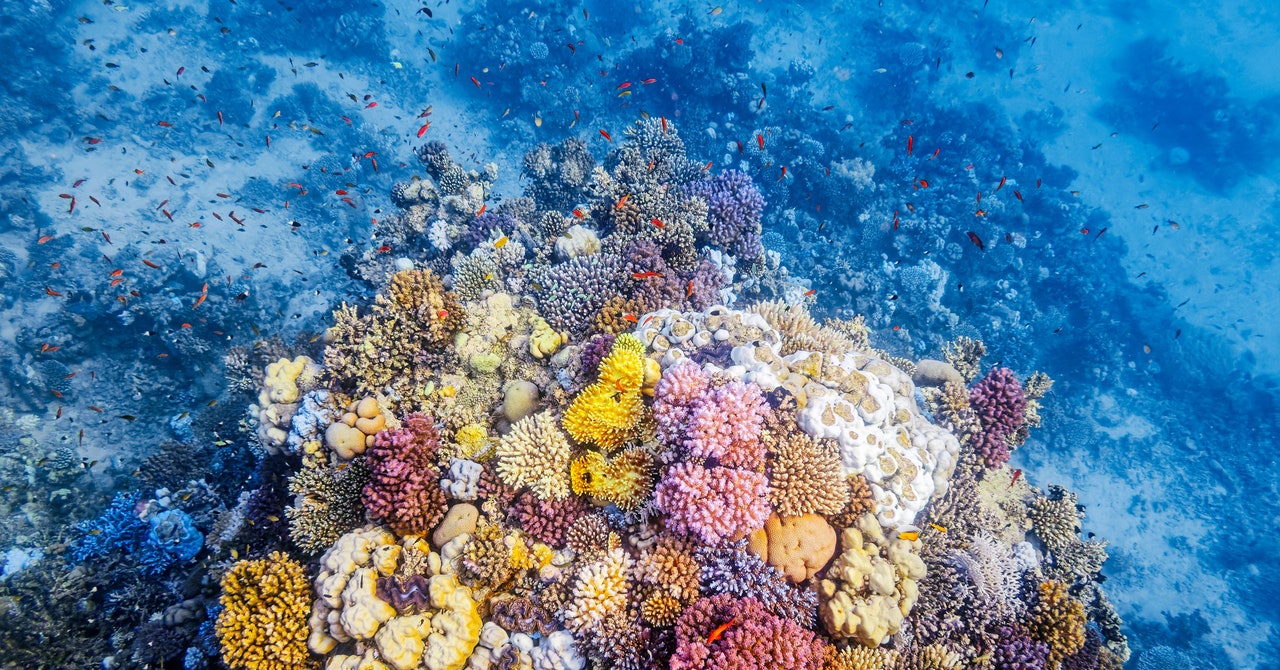
To see what defenses coral have already evolved against warmer waters, Meibom and his colleagues wanted to learn just how much heat the corals and their complex network, called a holobiont, could withstand. He likens it to testing the strength of a rubber band: How far can you stretch it before it breaks? And how long does it take to return to its regular shape?
Karine Kleinhaus, who researches corals at Stony Brook University, says it is crucial to understand how these corals operate at the cellular level. “These amazing corals are going to be among the last to survive” to the end of the 21st century, she says. “We need to figure out what they are doing, what’s going on, how they do it.”
In their experiment, the researchers grew S. pistillata in a series of aquaria they dubbed the Red Sea Simulator. Each aquarium could be customized to replicate specific water conditions and to expose the coral, algae, and bacteria to different temperatures for different time periods. Then the researchers examined which genes the coral expressed during their normal state, how that changed as the temperature rose, and how fast that gene activity went back to normal when the temperature was reduced.
They found that all three organisms were all able to change which genes they used as the water warmed up. The coral, for example, turned up the use of genes that are involved in unfolded protein response, a mechanism that is used to detect environmental stress and preserve homeostasis in the cell; in other studies, it’s been described as corals’ first line of defense against heat. Meanwhile, the algae turned down the activation of genes related to photosynthesis. Overall, the Red Sea species were able to stay alive until the temperature warmed up by more than 5 degrees C. And once the scientists lowered the temperature in the tanks, the entire holobiont returned to a normal state, even after a week under hot conditions. Meibom likens their resiliency to a super-fit athlete who is able to recover quickly after a big workout and get ready for another challenge.
“The paper is really good work and sheds light on the early stages of heat-stress response in thermally tolerant corals,” says Andréa Grottoli, a professor in the School of Earth Sciences at Ohio State University who studies coral and climate change. But she notes that there are some limitations to this approach. Just because the genes are activated doesn’t mean that the coral will ultimately make new proteins. It’s an indicator that the coral is responding to its environment, but it’s not the whole story—you would also want to know exactly which biochemical changes it was making to adapt, and how those physically change the coral.
Grottoli also points out that the longest exposures in the study, up to seven days, are shorter than many real-life heat waves. “Most natural bleaching events are two months long,” she says.
Meibom agrees that his study doesn’t explain how these newly activated genes might help the coral survive, but he says that identifying them is a step toward figuring that out. “It provides a hint for what is going on.”
It’s also unclear why these corals possess this heat resistance but others don’t. It may not be because they evolved in the hot climate of the Red Sea, but because they arrived from someplace even hotter. Meibom theorizes that it may have to do with which species populated the Red Sea during the last ice age, some 20,000 years ago. Water from around the equator evaporated and eventually froze into large glaciers. With all that water trapped in ice, sea levels plummeted, cutting the Red Sea off from the Arabian Sea, essentially turning it into a lake. The water level dropped and salt accumulated, making it an inhospitable environment. But when the glaciers melted and the connection to the rest of the ocean was repaired, new water and life forms flooded in. That included coral living in the Arabian Sea, which had slowly made its way up from hotter southern waters. Only these species that were adapted to heat were healthy enough to send their larvae north to repopulate the Gulf of Aqaba. “They were selected. It’s like a filter,” says Meibom.


